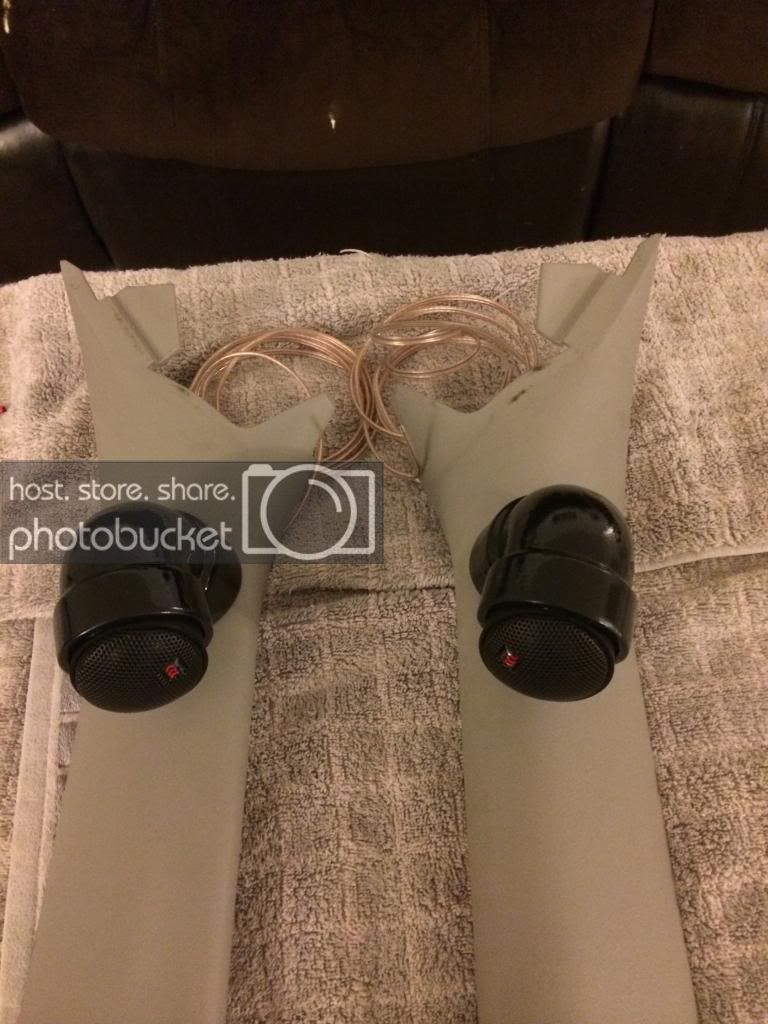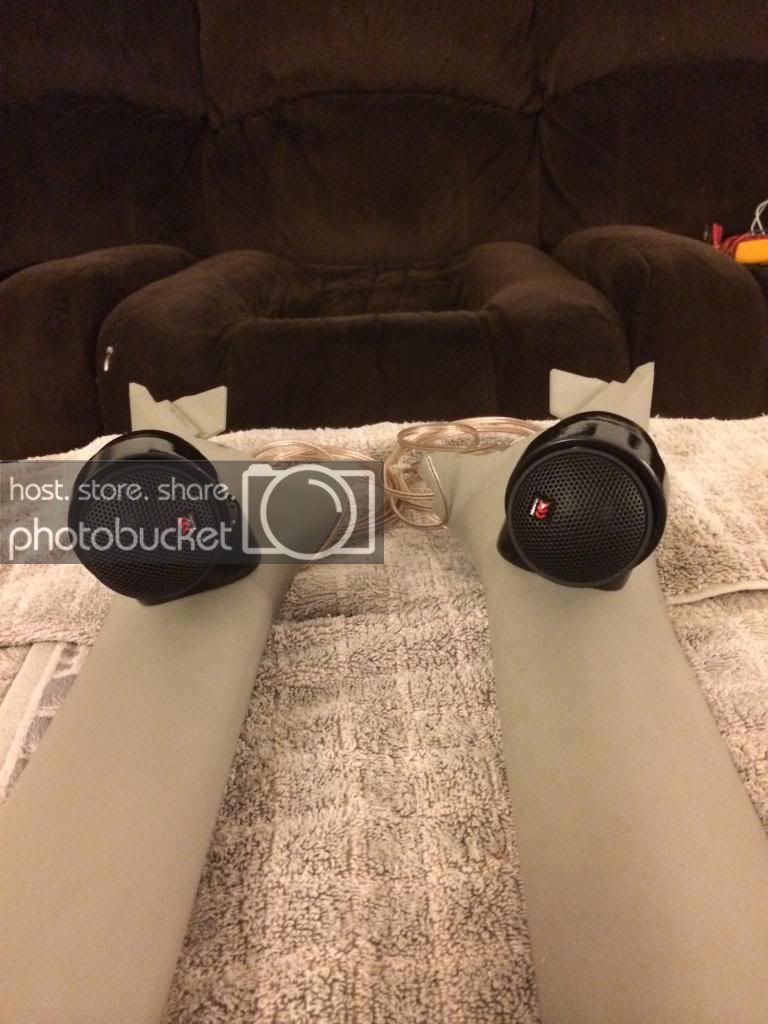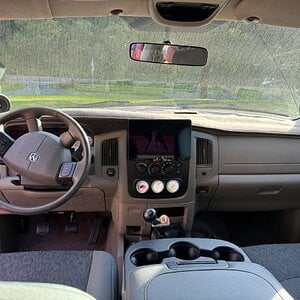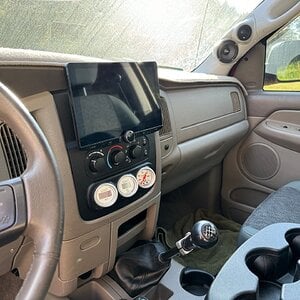Okay, I have gone over many of the threads here and tried a bit of stuff with tuning that sometimes sounded good, sometimes not so much. Let me tell what I am working with so far and see if you can pitch some good ideas.
I want my 2005 Sentra to sound as bad *** as possible. Clear enough request. The last time I really set up a system on my own was back in the early 90's when Class A amps were still going into cars...had some old school HiFonics amps, ribbon tweets, and beefy mids...and we just tweaked until most things sounded good. I keep hearing people say how once you get things dialed in, everything should sound good. I simply cannot see how this is true. All recordings are not created equal and some shops just couldn't mix an album if their life depended on it.....more on this later when I talk about SQ.
So what I have now...
An Alpine Deck (CDE -153BT) that has a 9-band parametric EQ on it with +/-7db adjustability. I have Morel Tempo 6's in (for now) a passive setup with the recommended passive Xovers. Those are hooked to a JL CX360/2 Amp. Then in the trunk I have a Polk DVC 12" that kicks like a mule good enough hooked up to a Kicker 300.1 amp.
What I have coming...
On the recommendation of some pretty seasoned Car Audio members, I have the Pioneer DEH-80PRS coming today....super happy....and I also have a JL Audio 360/4 channel amp coming to allow me to go fully active with the 80PRS.
The current observations...
I am pretty new to adjusting using an RTA...and I know that there are some good steps to take leading up to that step. With a bi-amp network, I can level match with the left and right fronts, and then the rear...which is essentially level matching the amps. I had a choice on the Passive Xovers to either boost the tweets by +3db...or leave em at zero...I left em at zero cause they are in pillars and seem to mix better at 0db. So level matching amps for now until I get fully active.
As far as mounting, The tweets are up in the pillars and the mids are in the kick panels. I don't have it in me at the moment to build pods and I really wouldn't know where to start with a mission like that in a Sentra. However, the positions seem okay and I have indeed gotten some really, really good sound out of it given the right source material. (That 'given the right source material' may play a lot into the discussion). What I am looking for is...
Why I look for this is the following. What is the tolerance you are looking for in tuning a system flat. I mean...does nothing vary by +/- 3db? When I start with the system flat, I see some things that can vary by quite a bit...and they jump around a lot. Is it supposed to really be flat? I have seem some curves that slope downwards and heard of people saying reduce db output by so much per octave. What is up with that?
Anyway, let's say that I got it somewhat flat...okay. At first, I can say...yeah....I can hear a lot of most everything in the mix. I mean....I listen to mostly rock and heavy metal a la heavily compressed mixes where you won't be creating a sound stage in your head. I don't care...you can have primo headphones on and with really compressed music...things are just fused together and you can hear this in the source material at any volume. With other more dynamic recordings....things are very much more tolerable and something of a sound stage is maintained. What I notice with full saturated bandwidth kind of rock or metal is that flat is just going to be too damned bright in the mid areas. So after I get it flat, I go in and look to make other adjustments....but I can't make them without trading off. If I have to make an adjustment, there is compromise...okay. However, some shrill sounds can't seem to be EQ'd out...either that, or I cannot target the offending frequency....or when I get to the band I think it is...it is already cut hard. I end up playing with controls until I have to start over again which never seems to end up with the same settings each time. What the heck am I looking for here? Also, the Alpine is f**king maddening with the sheer number of clicks to make adjustments. Somehow, I think I am caught between a well-tuned system and also trying to EQ crappy recordings when they come up in my listening. I am an older dood and I have stuff from the 80's forward. I can tell with absolute certainty, that there will be no system on which you can put all these on and have them sound just beautiful....accurate...maybe...but not beautiful.
So I am looking for really detailed use of the RTA and what kind of things you let go...and what kind of things send you into making changes other than EQ. How do I know what I can control and what I cannot? I want some good strategies as I get my proper equipment coming in. You will save the day if you can get me going in the right direction.
I want my 2005 Sentra to sound as bad *** as possible. Clear enough request. The last time I really set up a system on my own was back in the early 90's when Class A amps were still going into cars...had some old school HiFonics amps, ribbon tweets, and beefy mids...and we just tweaked until most things sounded good. I keep hearing people say how once you get things dialed in, everything should sound good. I simply cannot see how this is true. All recordings are not created equal and some shops just couldn't mix an album if their life depended on it.....more on this later when I talk about SQ.
So what I have now...
An Alpine Deck (CDE -153BT) that has a 9-band parametric EQ on it with +/-7db adjustability. I have Morel Tempo 6's in (for now) a passive setup with the recommended passive Xovers. Those are hooked to a JL CX360/2 Amp. Then in the trunk I have a Polk DVC 12" that kicks like a mule good enough hooked up to a Kicker 300.1 amp.
What I have coming...
On the recommendation of some pretty seasoned Car Audio members, I have the Pioneer DEH-80PRS coming today....super happy....and I also have a JL Audio 360/4 channel amp coming to allow me to go fully active with the 80PRS.
The current observations...
I am pretty new to adjusting using an RTA...and I know that there are some good steps to take leading up to that step. With a bi-amp network, I can level match with the left and right fronts, and then the rear...which is essentially level matching the amps. I had a choice on the Passive Xovers to either boost the tweets by +3db...or leave em at zero...I left em at zero cause they are in pillars and seem to mix better at 0db. So level matching amps for now until I get fully active.
As far as mounting, The tweets are up in the pillars and the mids are in the kick panels. I don't have it in me at the moment to build pods and I really wouldn't know where to start with a mission like that in a Sentra. However, the positions seem okay and I have indeed gotten some really, really good sound out of it given the right source material. (That 'given the right source material' may play a lot into the discussion). What I am looking for is...
- A video of someone actually going through and tuning a system flat.
- What a 'flat' RTA output looks like and what weightings are used.
Why I look for this is the following. What is the tolerance you are looking for in tuning a system flat. I mean...does nothing vary by +/- 3db? When I start with the system flat, I see some things that can vary by quite a bit...and they jump around a lot. Is it supposed to really be flat? I have seem some curves that slope downwards and heard of people saying reduce db output by so much per octave. What is up with that?
Anyway, let's say that I got it somewhat flat...okay. At first, I can say...yeah....I can hear a lot of most everything in the mix. I mean....I listen to mostly rock and heavy metal a la heavily compressed mixes where you won't be creating a sound stage in your head. I don't care...you can have primo headphones on and with really compressed music...things are just fused together and you can hear this in the source material at any volume. With other more dynamic recordings....things are very much more tolerable and something of a sound stage is maintained. What I notice with full saturated bandwidth kind of rock or metal is that flat is just going to be too damned bright in the mid areas. So after I get it flat, I go in and look to make other adjustments....but I can't make them without trading off. If I have to make an adjustment, there is compromise...okay. However, some shrill sounds can't seem to be EQ'd out...either that, or I cannot target the offending frequency....or when I get to the band I think it is...it is already cut hard. I end up playing with controls until I have to start over again which never seems to end up with the same settings each time. What the heck am I looking for here? Also, the Alpine is f**king maddening with the sheer number of clicks to make adjustments. Somehow, I think I am caught between a well-tuned system and also trying to EQ crappy recordings when they come up in my listening. I am an older dood and I have stuff from the 80's forward. I can tell with absolute certainty, that there will be no system on which you can put all these on and have them sound just beautiful....accurate...maybe...but not beautiful.
So I am looking for really detailed use of the RTA and what kind of things you let go...and what kind of things send you into making changes other than EQ. How do I know what I can control and what I cannot? I want some good strategies as I get my proper equipment coming in. You will save the day if you can get me going in the right direction.





